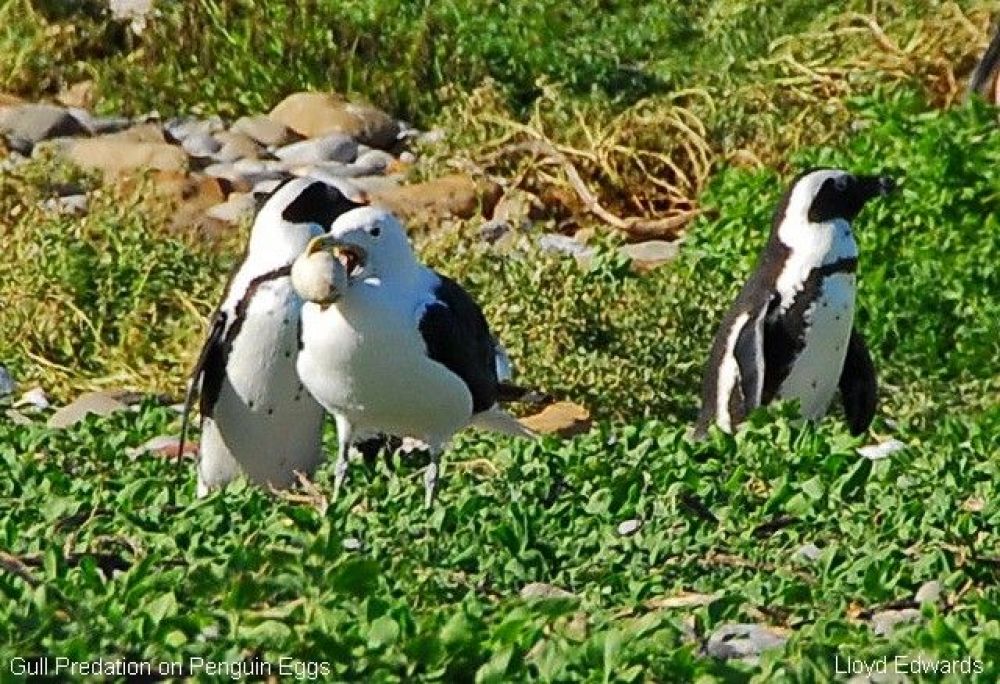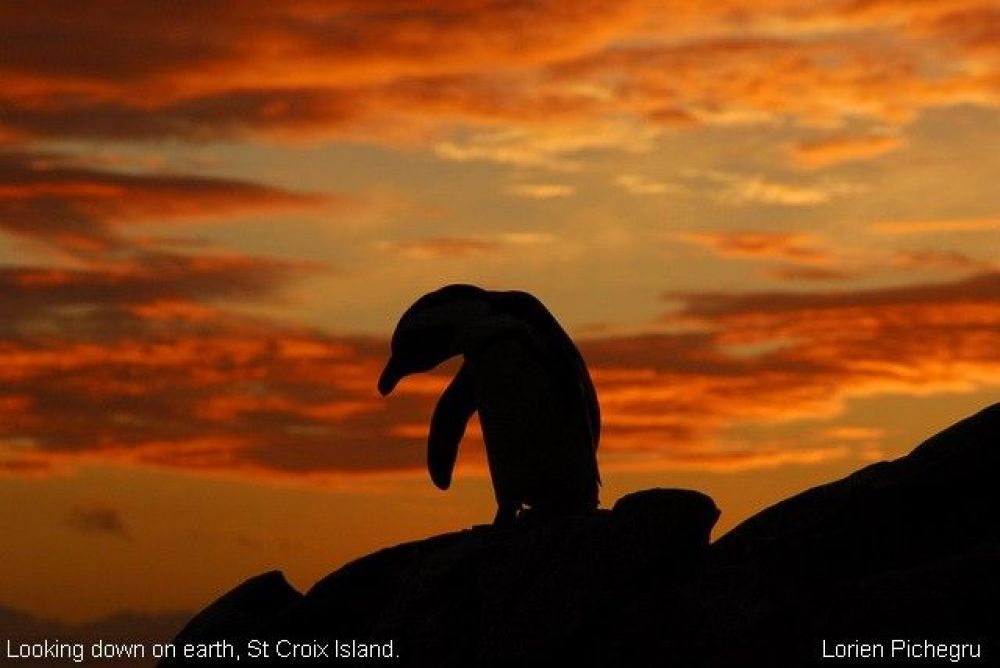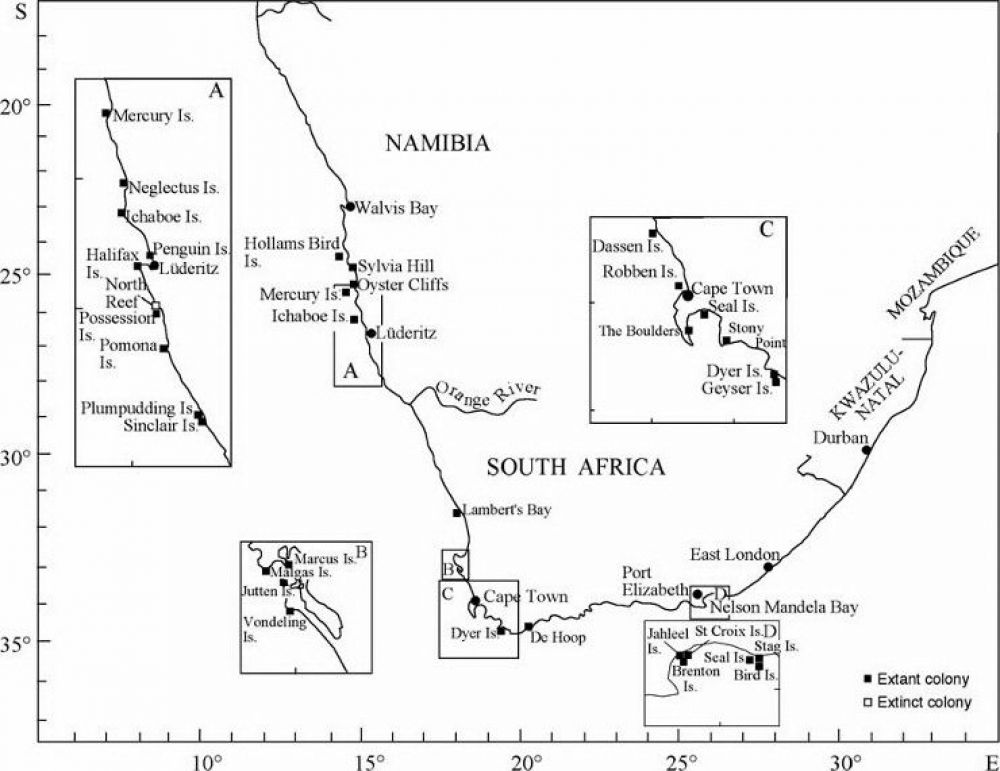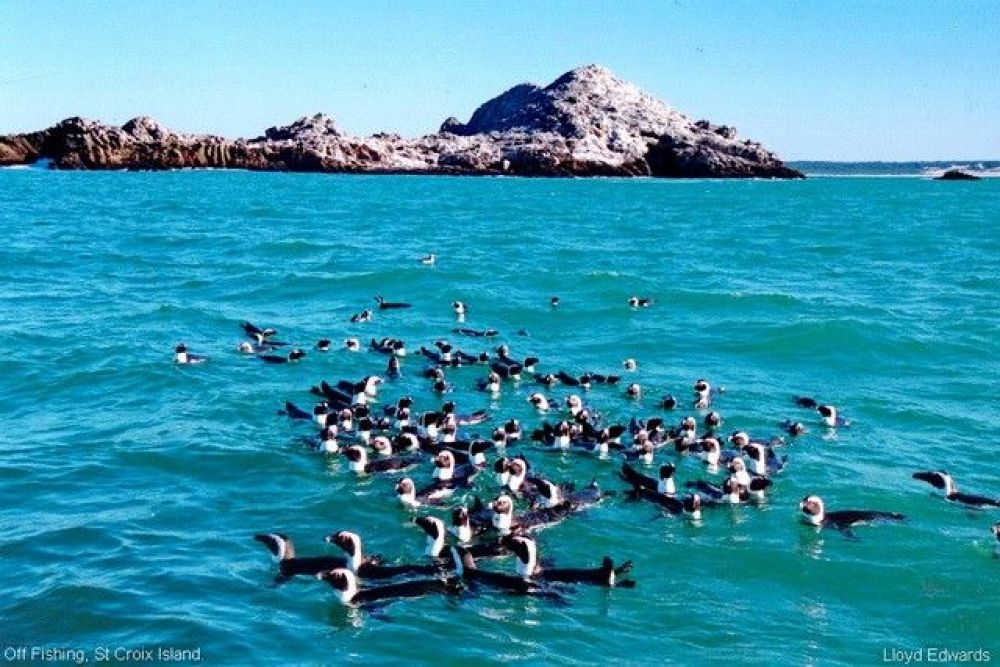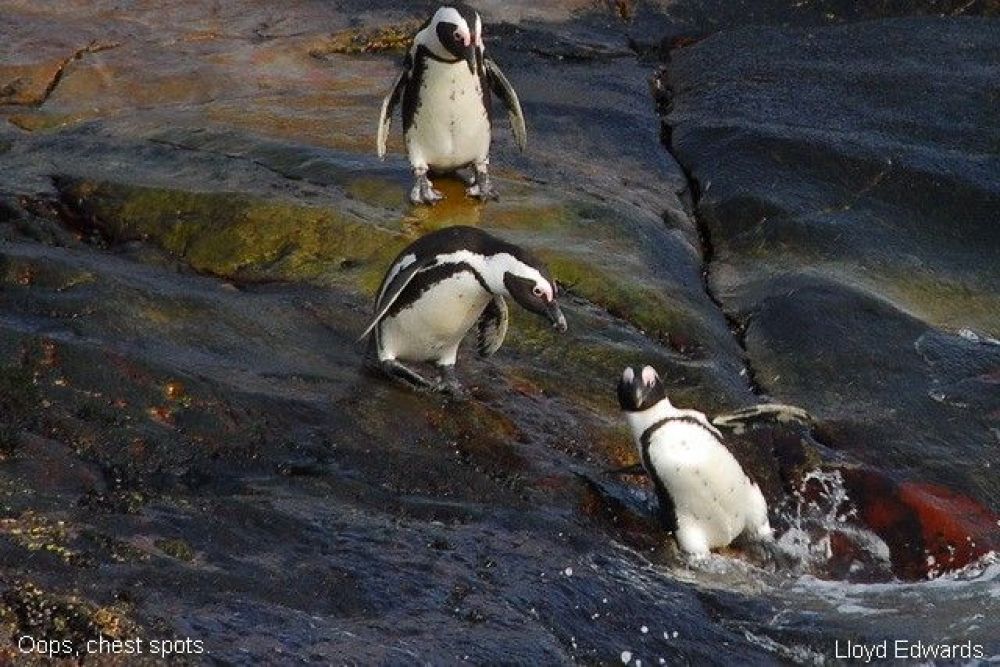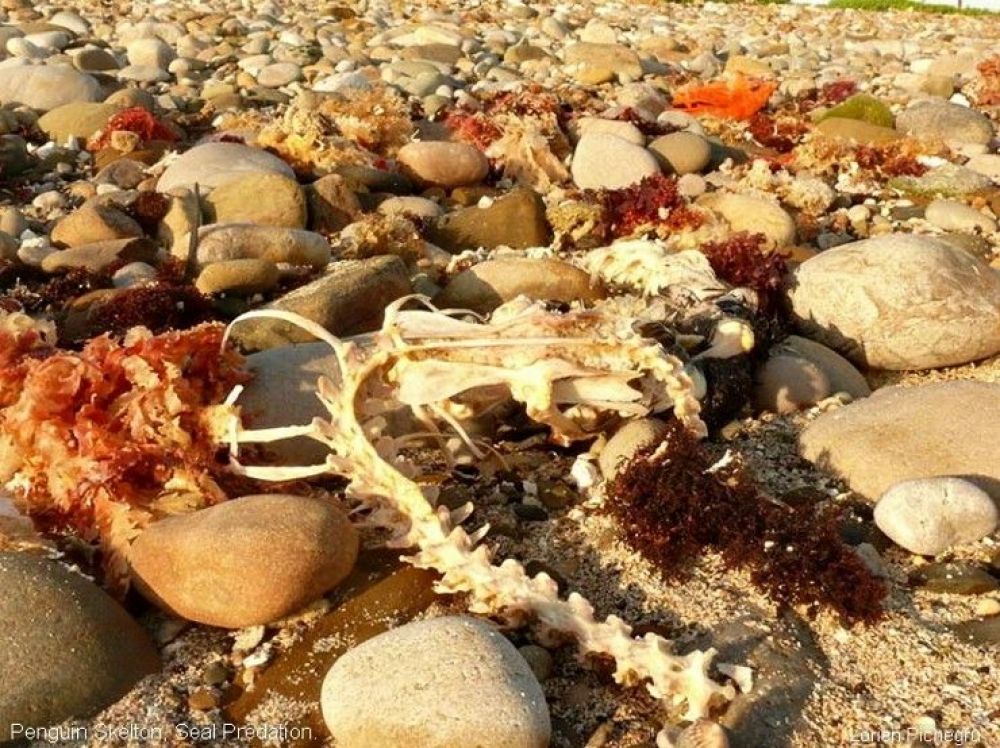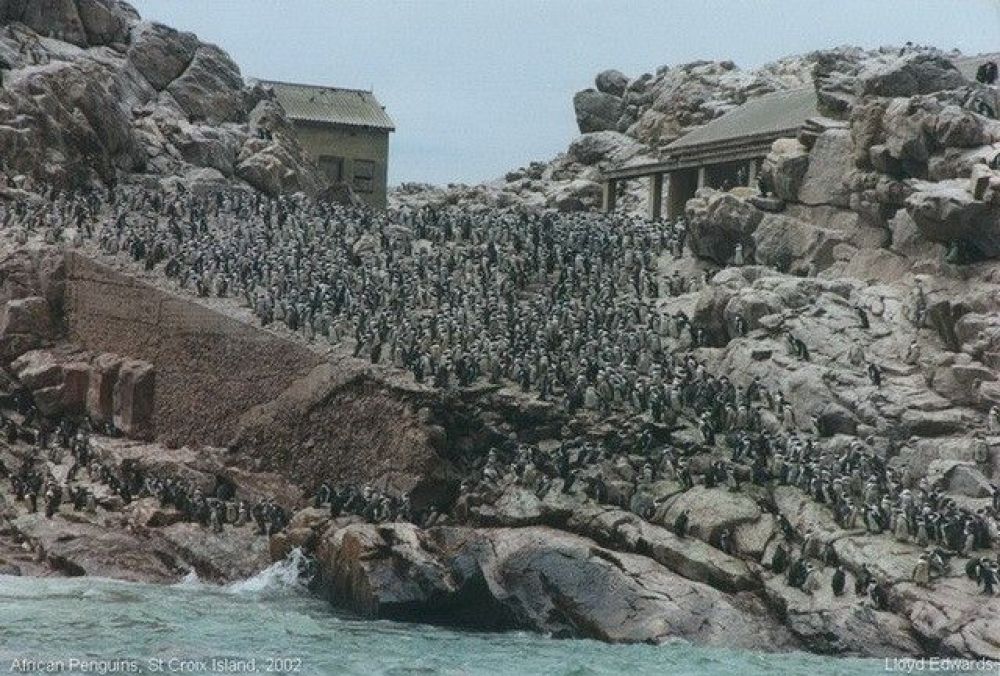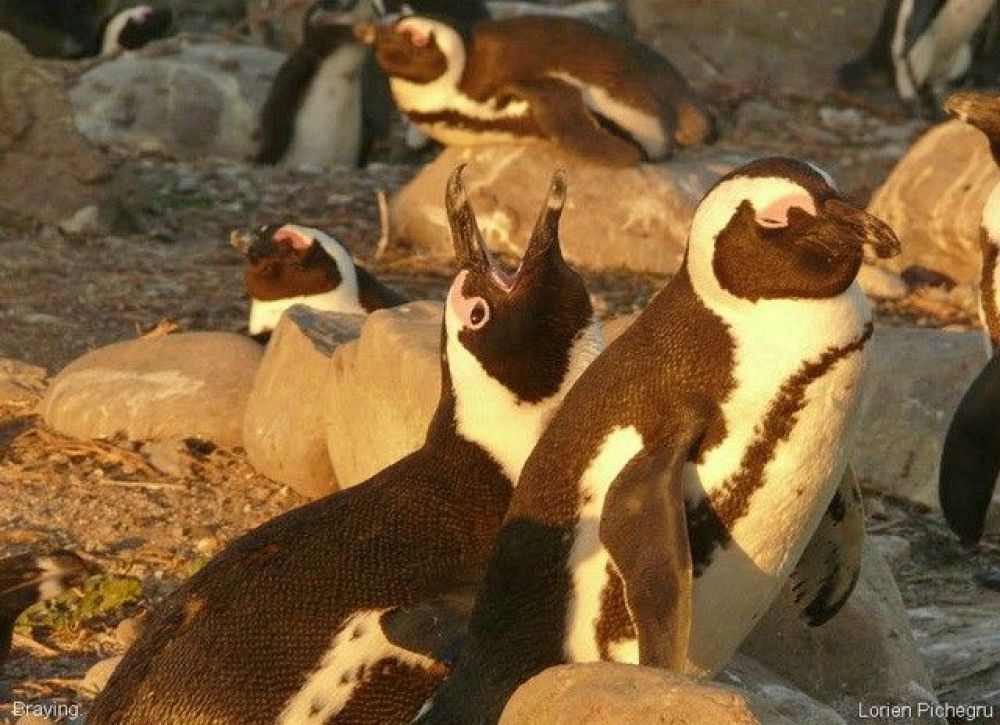- Cruise Packages
- About
- Algoa Baywatch
- Algoa Baywatch Conservation Projects Summary
- Addo Canyon
- STS BUNKERING VS ENDANGERED AFRICAN PENGUIN
- Whale Entanglements
- Southern Hemisphere Humpback Whale Migration Route (SHHWMR)
- Live Shark Project
- Education
- Raggy Charters, Mosaic & Re-Trade Re-Cycle Project
- Tree Planting
- Spekboom Whale Community Project
- Sunfish Research Project
- Plankton Sampling in Algoa Bay
- Beach clean-ups
- Other Projects
- Media
- Contact
Introduction to the African Penguin
There are about 18 species of penguins in the world, all of which are found in the Southern Hemisphere. Our penguin was previously known as the Jackass penguin because of the braying sound like a donkey they make when singing. They have been renamed as “African”, because other penguins also bray like the Humboldt, Magellanic and Galapagos penguins. They are cousins of the African (all being from the genus Spheniscus). African penguins are named as such as they’re the only ones breeding on the Africa continent!
How can penguins, usually clichéd as breeding on ice, be found under the hot sun of Africa? They can do this as they feed in the cold waters of the Benguela upwelling current, which is a very rich system but very cold too. So too is the Humboldt Current on the South American coast.
African penguins breed on 29 colonies in total, 13 in Namibia and 16 in South Africa. Two of the South African colonies are land based, one at Boulders Beach and the other at Stony Point. The rest are all on islands, the largest being St Croix Island. When roaming the seas during the 3-4 first years of life, they can travel as far afield as Angola and Mozambique!
African penguins are about half a meter tall and weigh between 2 to 4 kg, with females slightly smaller than males. Each penguin, like zebras, has a unique pattern of black dots on their white chest which allows individual identification. Their coloration can vary, from rare leucistic forms (almost albinos but without the red eyes) to melanistic forms (much darker).
Natural predators include Great White sharks, killer whales and seals while at sea. On land kelp gulls and Antarctic skuas target the eggs and small chicks. These birds harass adults returning from sea to feed their chicks. The penguin eventually regurgitates its catch which is gobbled up by the gulls!
On mainland colonies, such as Boulders, penguins are also exposed to predation by genets, leopards, cats, rats and dogs. Seabirds generally evolved breeding on islands to be safe from such predators, as they breed on the ground and are not very agile, hence being an easy target for these mammals.
